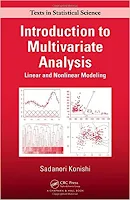Introduction to Machine Learning 3rd Edition
Ethem Alpaydin ... 640 pages - Publisher: Phi; 3rd edition (2015) ... Language: English - ISBN-10: 8120350782 - ISBN-13: 978-8120350786.
The goal of machine learning is to program computers to use example data or past experience to solve a given problem. Many successful applications of machine learning exist already, including systems that analyze past sales data to predict customer behavior, optimize robot behavior so that a task can be completed using minimum resources, and extract knowledge from bioinformatics data. Introduction to Machine Learning is a comprehensive textbook on the subject, covering a broad array of topics not usually included in introductory machine learning texts. Subjects include supervised learning; Bayesian decision theory; parametric, semi-parametric, and nonparametric methods; multivariate analysis; hidden Markov models; reinforcement learning; kernel machines; graphical models; Bayesian estimation; and statistical testing.
Machine learning is rapidly becoming a skill that computer science students must master before graduation. The third edition of Introduction to Machine Learning reflects this shift, with added support for beginners, including selected solutions for exercises and additional example data sets (with code available online). Other substantial changes include discussions of outlier detection; ranking algorithms for perceptrons and support vector machines; matrix decomposition and spectral methods; distance estimation; new kernel algorithms; deep learning in multilayered perceptrons; and the nonparametric approach to Bayesian methods. All learning algorithms are explained so that students can easily move from the equations in the book to a computer program. The book can be used by both advanced undergraduates and graduate students. It will also be of interest to professionals who are concerned with the application of machine learning methods. Introduction to Machine Learning can be used by advanced undergraduates and graduate students who have completed courses in computer programming, probability, calculus, and linear algebra. It will also be of interest to engineers in the field who are concerned with the application of machine learning methods.
The goal of machine learning is to program computers to use example data or past experience to solve a given problem. Many successful applications of machine learning exist already, including systems that analyze past sales data to predict customer behavior, optimize robot behavior so that a task can be completed using minimum resources, and extract knowledge from bioinformatics data. Introduction to Machine Learning is a comprehensive textbook on the subject, covering a broad array of topics not usually included in introductory machine learning texts. Subjects include supervised learning; Bayesian decision theory; parametric, semi-parametric, and nonparametric methods; multivariate analysis; hidden Markov models; reinforcement learning; kernel machines; graphical models; Bayesian estimation; and statistical testing.
Machine learning is rapidly becoming a skill that computer science students must master before graduation. The third edition of Introduction to Machine Learning reflects this shift, with added support for beginners, including selected solutions for exercises and additional example data sets (with code available online). Other substantial changes include discussions of outlier detection; ranking algorithms for perceptrons and support vector machines; matrix decomposition and spectral methods; distance estimation; new kernel algorithms; deep learning in multilayered perceptrons; and the nonparametric approach to Bayesian methods. All learning algorithms are explained so that students can easily move from the equations in the book to a computer program. The book can be used by both advanced undergraduates and graduate students. It will also be of interest to professionals who are concerned with the application of machine learning methods. Introduction to Machine Learning can be used by advanced undergraduates and graduate students who have completed courses in computer programming, probability, calculus, and linear algebra. It will also be of interest to engineers in the field who are concerned with the application of machine learning methods.


